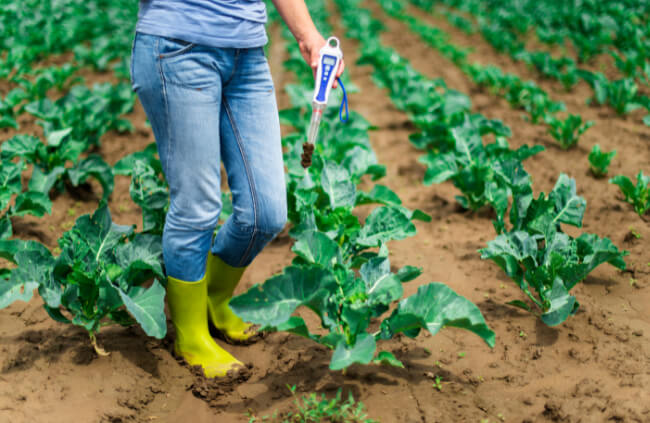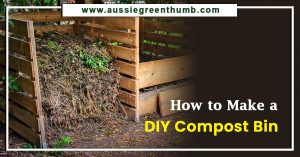Soil testing on a yearly basis is important for productive gardening. Poor soils, or soils that are not appropriate for a particular species of plant will always bring a lower-than-expected yield to next year’s harvest.
There are many ways to analyse soil. Hiring a professional is certainly one way to do it. In today’s ‘do-it-yourself’ world, more people are testing their own garden soils.
More...
Comprehensive Guide to Soil Testing

When is the Best Time for Soil Testing
The best time to check the nutrients, the porosity, and the acidity-alkalinity (pH) of any soil is once the growing season is over and the harvest is complete. Before sowing your seeds in the spring is another good time to check certain soil factors.
Turning the soil over increases its porosity and allows for water to permeate the ground more readily. This permits plants to receive needed water without over-saturating the ground and also allows the plants the space necessary to fully grow.
Turning the soil and adding some fresh soil is important and needs to be done just before planting season. Test the new soil before adding it to the ground.
What to Test in Your Soil
Checking the Texture and Structure of Soil
The structure of the soil is determined by a combination of sand, silt and clay which all refer to particle size that make up soil texture. The proper mixture will provide you with a soil that easily crumbles yet holds together when squeezed.
Clay sticks together and has a low permeability and porosity that tends to deter drainage. The appropriate mix will contain enough large sand and moderate size silt particles. Select a handful in your test area.
See how it crumbles and responds when wet. Common sense is your best test. A good soil allows for good drainage, enough pores to contain oxygen and microbial activity. If the soil does not hold together, there is too much sand or too many silt size particles.
If there is too much compaction, then there is too much clay in the mix.
Check Colour
Dark soils are usually rich in nutrients, while light brown soils are indicative of heavily leached soil and clay content.
Check pH of soil at different spots according to what you intend to plant
pH is the measure of hydrogen ion activity of any substance, with this being a measure of acidity or alkalinity. Home test kits will provide a colour chart that shows a scale of 1-14. Number 7 on the test scale reads neutral, while the lower the number, the more acidic the soil and the higher the more alkaline.
Different plants require a different degree of acidity or alkalinity; that is why it is vital to test each area of your garden. If soil is too acidic, add lime. If it is too alkaline then add sulphur.
10 Soil Tests to Get Your Garden in Shape
Your garden soil is your greatest asset. If it’s kept healthy and alive then growing plants won’t be a problem. But, if you ignore it, abuse it, or work it too hard you will find that your plants aren’t going to stick around.
Here is a list of tests that you can perform in your own garden to bring your soil up to speed.

- Soil structure & tilth - Dig a hole to the depth of a shovel and crumble the soil in your hand. It will either be cloddy, powdery, or granular. Granular is the ideal as it allows better movement of air and water.
- Compaction - Drive a piece of thin wire into the soil. The point at which it bends displays where the soil is becoming too compact.
A foot or more of easily penetrable soil is ideal as compacted soil inhibits root growth. - Workability - Simply judge the effort necessary to prepare beds for planting. If it’s too hard to work with your soil then you will have many problems with your plants.
- Soil Organisms - Dig a hole about 6 inches deep and inspect the animal life present. This includes earthworms, centipedes, spiders and other insects. If you count less than 10, your soil does not have enough active players in the food chain. The reason why this is so important is that the more active life beneath the surface of your soil, the less chance of disease and other pests.
- Earthworms - As with the last test, dig another hole and count the number of wriggling earthworms. Three worms are good, five are better. No worms = low quality organic soil.
- Plant residue - One month after turning over your cover crop, re-dig the area and inspect the decomposition. If you can still recognise plant parts as well as plant fibres and darkly coloured humus this demonstrates that the soil activity is good.
- Plant vigour - All factors being equal (no adverse climate problems or seed timing issues) then your plants should be healthy. They should also be relatively uniform in their growing stages, size and colour.
- Root development - Dig up a growing weed and inspect its root development. The roots should have white, fine strands that appear healthy. Brown roots indicate drainage problems and stunted roots may show that disease has set in.
- Water infiltration - Remove the bottom from a tin can and insert it into the soil leaving 3 inches above the surface. Fill with water and time how long it takes for the water to dissipate. Repeat this several times until the rate of absorption slows and your times become consistent. Anything slower than 1/2 to 1 inch per hour is an indication of compacted soil.
- Water availability - After a soaking rain, record how long it takes for your plants to show signs of thirst. The basic lesson is that if plants require more frequent watering than typical for your region, your soil is probably the culprit.
Where to Get Soil Testing Kits
Most hardware, lawn and garden shops and stores that sell products for the home have a variety of soil testing kits available for the home gardener. It is good to do the test yourself as you can ‘see’ what the tests are showing for your garden.
When you receive results from a professional service, you obtain your information from an outside source. Professional testing does not allow for ‘hands-on’ experience and overall learning about something that is important to you.

When your garden is vital to you, it is best to know exactly what it needs to grow and thrive. When your various types of gardens are tested and cared-for appropriately, they will produce more flowers and food supplies, in addition to having a more colourful and healthy appearance.
A garden requires a lot of work in the establishment phase as well as the various maintenance stages, so you really want it to be as grand as possible. Soil testing will allow you to stand back and view your garden with both pride and pleasure.
Learning How to Use a Soil Testing Kit

When the leaves on your plants start turning mottled colours or they begin to wilt and drop off without any explanation it may be a clue that your soil is having a few issues. It could be too alkaline or acidic, it may be missing some essential nutrients for the type of plants that you’re growing, or it may even be that there is just not enough organic matter to give your soil the structure it needs.
The biggest areas of trouble that most people have with their plants are: (1) pests, (2) virus strains and moulds, and (3) their soil. If you get the soil right you may have inadvertently fixed the other two because healthier plants can usually ward off, or at last handle, an attack from pests and diseases.
So how do you know whether the problem is with the plant or with the soil?
The more experience you have as a gardener will help you to answer this question. You can probably tell instantly that the leaf discolouration your shrub is experiencing is from a lack of manganese, or the stunted growth your plant’s suffering is due to a lack of magnesium.
While this is great when you’re experienced you have to start somewhere and learn the basics. The best way to begin learning about your soil is by analysing it with a soil testing kit. These are usually available from your local nursery or hardware store and can vary in price and the things they analyse.
What to Expect in a Soil Testing Kit
The very least you should expect from any testing kit is an analysis tool that can test your soil for its pH levels. This test will show whether your garden is becoming too acidic or alkaline or possibly if it’s neutral.
None of these conditions are bad in themself but they could be if your plants are requiring a specific soil type. For instance, if you have a garden bed filled with camellias, gardenias, and azaleas you would want your soil to be fairly acidic (approx. 5.0 – 6.0 pH). Alkaline loving plants prefer a soil of 7.8 to 8.5 pH.
The test kit should also be able to measure the amount of nitrogen (N), phosphorus (P) and potassium (K) in your soil. These readings can help you find out the cause of some of the problems with your plants. If there is too much nitrogen the leaves of your plants will burn.
How to Remedy Your Soil After Soil Testing
If your soil is becoming too alkaline you may want to change the brand of fertiliser you’re using because it may be made up of too much salt. Try mulching with compost or adding blood and bone to the soil plus other composted manures rich in nitrogen.
If the soil is becoming too acidic, lay off composting as a mulch and add some lime to the soil.
Published on June 6, 2023 by Gary Clarke
Last Updated on November 6, 2023




